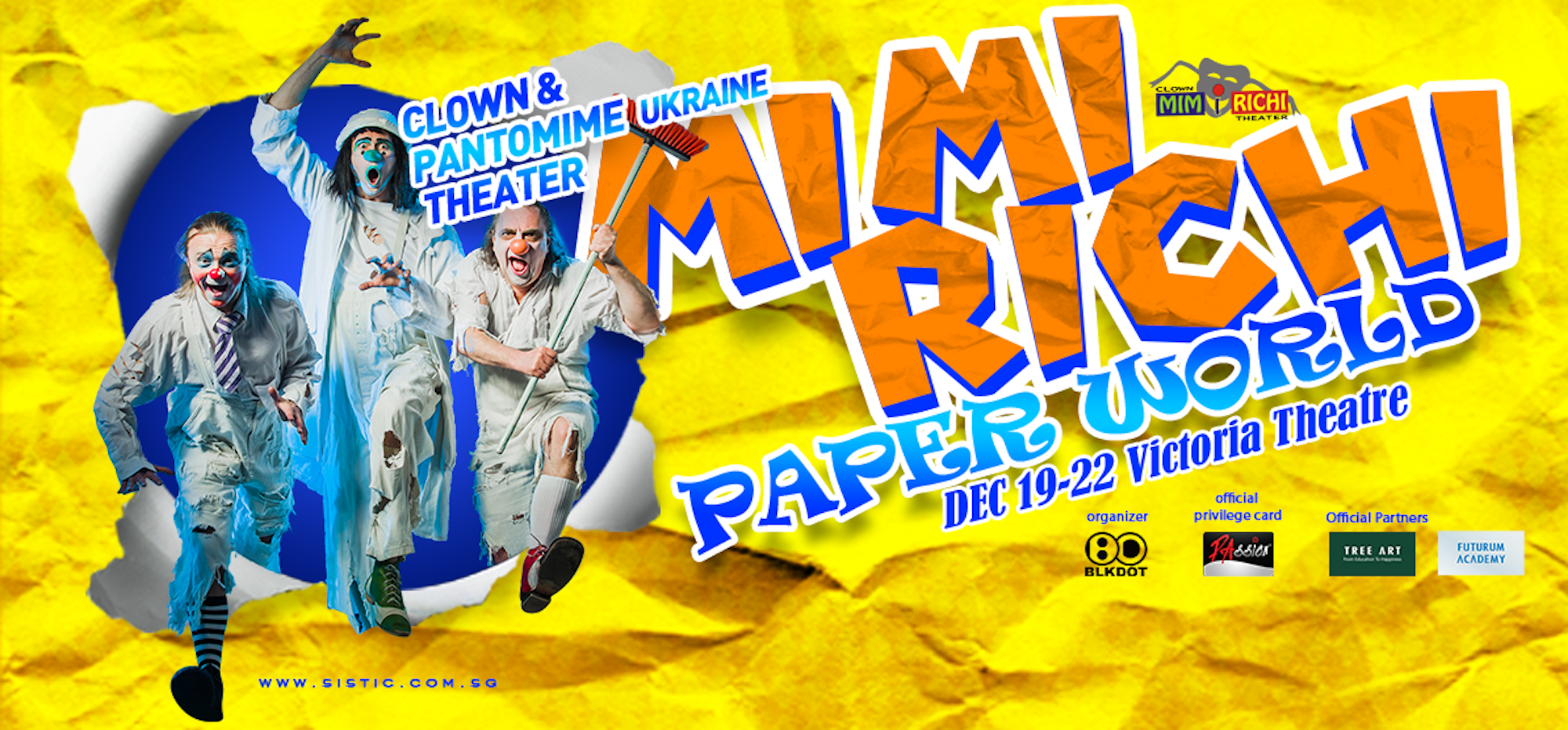Mimirichi’s “Paper World” Makes Its Singapore Debut With A Fun-Filled, Family-Friendly Theatrical Performance


Since its founding in 1989, MIMIRICHI has travelled the globe, bringing its fantastical performances to audiences in numerous countries. The Paper World show has been met with widespread acclaim for its imaginative and engaging approach to storytelling, transforming the stage into a whimsical paper world where anything is possible. Through collaborations with renowned international artists, MIMIRICHI continues to capture the hearts of audiences, young and old, with its creativity and infectious energy.
Event Highlights:
- Dates: December 19th to 22nd, 2024 (various show times)
- Ticket Prices: From $38
- Discount: 15% off with PAssion Card
- Pre-show Activities: Free Water Tattoo and Colouring Activities
- Special Offer: Follow @BLKDOTSG on Facebook and Instagram to receive a free clown nose!
The event is perfect for families, children, and anyone seeking a memorable and unique theatrical experience. This limited engagement offers a rare opportunity to witness the magic of MIMIRICHI’s Paper World, a show that will captivate audiences with its creativity and charm. With its interactive elements and delightful performances, the show promises to be a heartwarming, laughter-filled experience that will leave the whole family grinning from ear to ear.
Tickets are available for purchase through the Mimirichi Paper World Event Ticket Link. Don’t miss out on this limited-time performance, which is set to be a hit with audiences of all ages.
For a more immersive experience, guests can choose to purchase tickets for the exclusive VVIP or VIP Interaction Zones:
VVIP Interaction Zone
- VVIP Lanyard
- Exclusive Christmas Gift Bag
- Cast ‘Meet & Greet’ after the show
VIP Interaction Zone
- VIP Lanyard
- Exclusive Christmas Gift Bag
These exclusive packages provide an unforgettable, personalised experience, offering a chance to interact with the cast and receive unique gifts, making the Mimirichi Paper World performance even more special.
Hashtag: #BLKDOT
https://blkdotsg.com/
https://www.facebook.com/blkdotsg/
https://www.instagram.com/blkdotsg/
The issuer is solely responsible for the content of this announcement.
About BLKDOT
The name BLKDOT, derived from the abbreviation of BLACK DOT, symbolises the idea that all things in the world originate from darkness, gradually giving rise to light, colour, and life. Embracing this philosophy, BLKDOT is dedicated to bringing innovative ideas and vibrant new experiences to the public, allowing every audience member to experience the world’s unique colours and the power of creativity.
As an innovative cultural entertainment company, BLKDOT focuses on creating unprecedented experiences for every cultural activity. They actively explore the limitless possibilities of various cultures, pushing beyond traditional boundaries and infusing them with greater vitality. BLKDOT’s mission is to promote diverse cultural activities, helping to paint a more vibrant and colourful picture of the world while gathering creative talents to craft unique and unforgettable experiences for the public.




